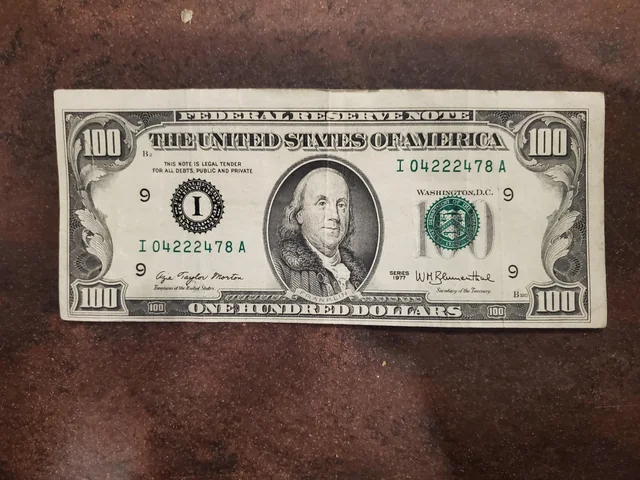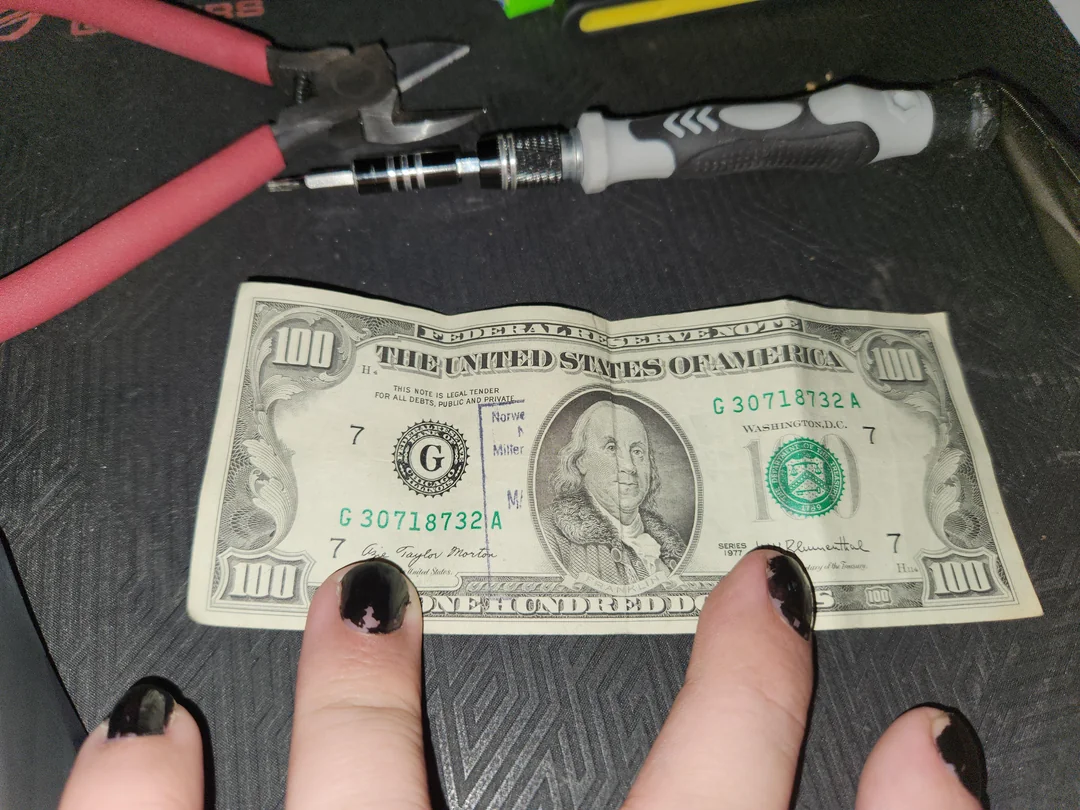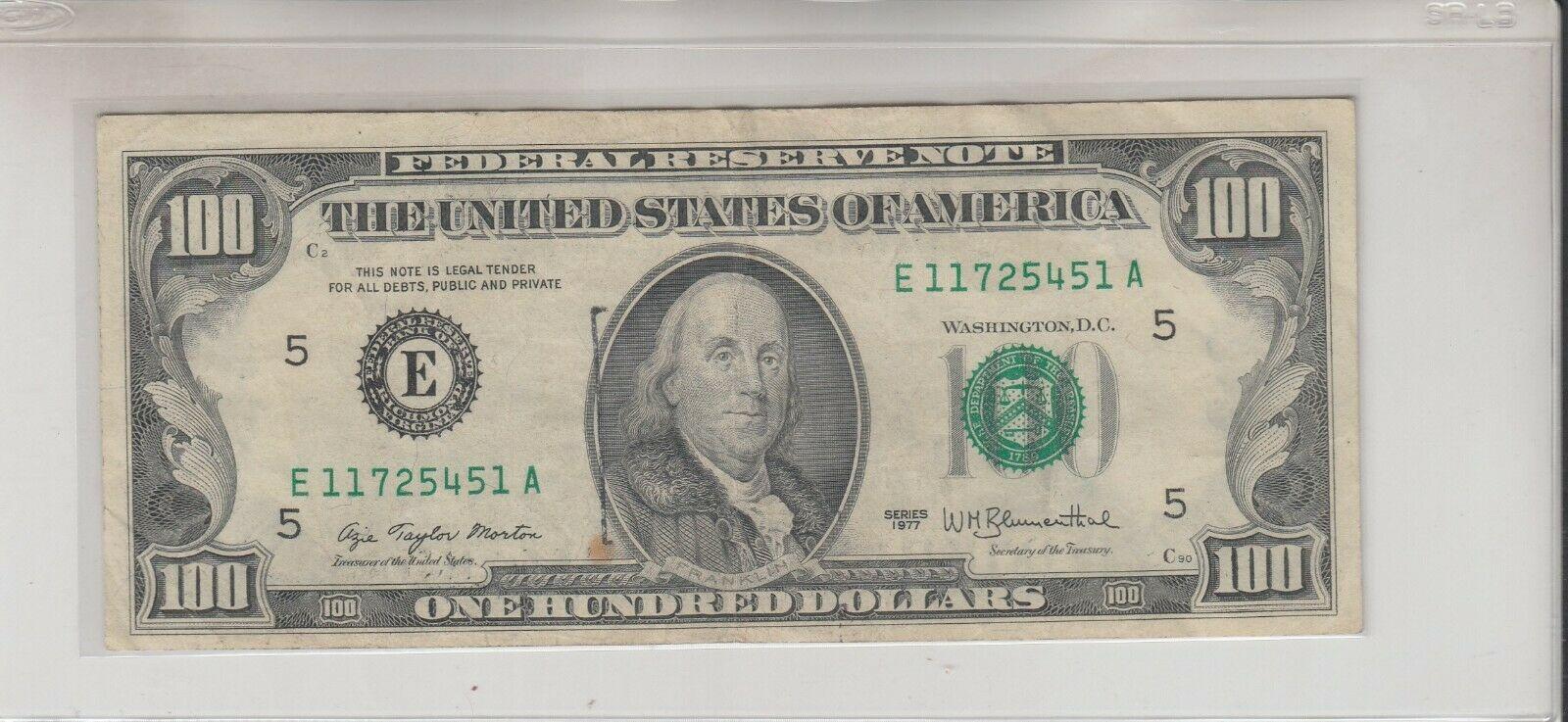If you happen to come across a 1977 $100 bill, you might wonder what it’s worth. After all, it’s a piece of history, with its unique design and connection to the past. Understanding the 1977 100 dollar bill value can be complex, as several factors influence its worth. While most of these bills are not highly valuable, certain types of notes, particularly star notes, can fetch significant amounts in the market.
This article will break down everything you need to know about the value, rarity, and factors that contribute to the worth of the 1977 $100 bill, including details about its features, condition, and market trends.
The 1977 $100 Bill Overview
The 1977 $100 bill was part of the U.S. Federal Reserve’s Series of that year. The bill features the familiar portrait of Benjamin Franklin on the front and the image of Independence Hall on the reverse side.

These bills were produced with the usual high standards of U.S. currency, but like all money, their worth is not always strictly tied to face value. Instead, they can have a range of values depending on factors such as rarity, condition, and unique features.
In general, most 100 dollar bills issued in 1977 are not valuable above their face value, especially when they are in circulated condition.
The true value of these notes emerges in the form of star notes and uncirculated bills, which are prized by collectors.
Grading and Condition: Why They Matter
To understand the 1977 100 dollar bill value, it’s crucial to know how the condition of a bill affects its worth. Coins, bills, and other forms of currency are graded based on their physical state.
The grading system typically ranges from “poor” to “gem uncirculated”. The more pristine the condition, the higher the value.
For instance, a 100 dollar bill in uncirculated condition—meaning the bill has never been used and is essentially brand new—will be worth much more than a circulated note. A bill in perfect condition (graded MS 63 or higher) can sell for $150 or more.
This is a general guideline for uncirculated bills, but collectors are often willing to pay even more for those with unique features, including errors, special signatures, or rare serial numbers.
Star Notes: A Premium on Rarity
One of the most important distinctions when determining the 1977 100 dollar bill value is whether the bill is a star note. These notes have a star symbol (*) at the end of their serial number.
Star notes are replacement bills that were printed when errors were found in the initial batch. Because of their limited production, they are much rarer than standard notes.
Star notes from the 1977 one hundred dollar bill series are particularly sought after by collectors.
While the regular 1977 bills are fairly common, star notes can sell for hundreds or even thousands of dollars depending on their condition.
For example, a star note from the 1977 $100 series in excellent condition could be worth $200 or more. Some particularly rare star notes can command much higher prices.
Factors Affecting Value
Several factors beyond condition and rarity can affect the value of a 1977 $100 bill. These include:
- Federal Reserve District: The location where the bill was issued matters. Different Federal Reserve Banks may produce different quantities of bills, affecting the rarity and value of those issued from particular locations.
- Serial Numbers: Collectors tend to prefer specific serial numbers, such as low numbers (e.g., 00000001), repeating numbers (e.g., 12312312), or special patterns (e.g., ladder serials). A star note with a unique serial number could attract more interest and sell for a premium.
- Signature Variety: The combination of signatures on the bill plays a role in its collectability. The 1977 $100 bill was signed by the Treasury Secretary and the Treasurer of the United States. Depending on their tenure and significance, these signatures can impact the bill’s market value.
- Errors: Bills with printing mistakes or other errors are valuable to collectors. These errors can range from misprints in the serial number to alignment issues or ink smudges. Any type of noticeable printing mistake can make a bill more valuable than one without such anomalies.
Market Trends and the Future of the 1977 $100 Bill
The market for paper money and collectible bills has fluctuated over the years, influenced by economic conditions, inflation, and the growing popularity of digital currencies. Despite these shifts, paper money remains a valuable commodity for collectors, especially for those interested in historical bills like the 1977 $100 bill.
In recent years, there has been a surge in interest from collectors and investors looking to buy and sell one hundred dollar bills.
As digital currencies and blockchain technologies grow in popularity, tangible currency like the 100 dollar bill could see an increase in value as it becomes a more rare commodity in an increasingly cashless world.
In this market, bills in pristine condition, star notes, and those with notable serial numbers or errors can appreciate in value.
As numismatics (the study of coins and paper money) becomes a more mainstream hobby, the value of rare notes like the 1977 $100 bill may continue to rise.
How To Identify A 1977 $100 Bill
If you’re unsure whether your 100 dollar bill is a 1977 version, you can identify it by examining the following features:

- Benjamin Franklin’s Portrait: Like other U.S. currency, the 1977 $100 bill features a detailed engraving of Franklin’s portrait.
- Independence Hall: On the back of the bill, you’ll find an image of Independence Hall in Philadelphia.
- Security Features: The 1977 series $100 bill includes a security thread that reads “USA 100” when held up to the light, visible from both sides of the note.
For collectors, the most important thing to verify is whether the bill is a star note. As mentioned earlier, star notes are much rarer and typically worth more than their regular counterparts.
Storing and Handling Your 1977 $100 Bill
Proper storage is essential to maintaining the condition of your 1977 100 dollar bill. To protect your bills from damage, store them in a cool, dry, and dark environment. Using protective currency holders or sleeves can help prevent creases, tears, or discoloration that would reduce the value of the bill.
Additionally, avoid folding the bill or subjecting it to harsh conditions that may cause wear. The more carefully you preserve your bill, the more likely it is to maintain or increase its value over time.
How much is a 1977 $100 bill worth today?
The value varies depending on the condition and type of note. Standard circulated bills are typically worth only face value ($100), but uncirculated bills or star notes can fetch much higher prices, ranging from $150 to several thousand dollars for rare specimens.
How can I identify a star note?
Star notes have a star symbol (*) at the end of their serial number. These notes are replacements for bills that had printing errors, making them more valuable.
What factors influence the value of a 1977 $100 bill?
Factors such as the bill’s condition, rarity (star notes), serial numbers, signature combinations, and printing errors all contribute to its market value.
Where can I sell my 1977 $100 bill?
You can sell your 1977 $100 bill through online auction sites, such as eBay, or through currency dealers and numismatic shops.
Conclusion: Is The 1977 $100 Bill Worth Collecting?
The 1977 100 dollar bill value can vary significantly depending on factors like rarity, condition, and unique features. While most of these bills are worth only face value or slightly more, star notes and those in exceptional condition can be highly valuable.
If you’re a collector or investor, understanding the nuances of currency grading, recognizing star notes, and keeping an eye on market trends are essential steps in making the most of your investment.
For those interested in diving deeper into the world of numismatics, the 1977 one hundred dollar bill provides an excellent starting point. With its distinctive design, historical significance, and potential for value growth, this bill remains a fascinating piece of U.S. currency.

